The Kimball upright that lives on the covered back porch at my house has had plenty of issues that I've been knocking out one at a time over the past year or two. Probably the most annoying problem is that many of the tuning pins are not as tight in the pinblock as they should be. The pinblock is a laminated block of hardwood mounted in the piano with holes drilled in it that the tuning pins fit tightly into. In this piano, as with many others, the pinblock is hidden behind parts of the piano cabinet as well as the cast iron plate. Some of the tuning pins here turn with only a pinky finger's worth of force on my tuning wrench. That's not good, and it means that this piano only holds a tune for a very short amount of time before the tension of the strings and the pounding of the hammers causes them to go flat.
In Pianos Inside Out by Mario Igrec, he describes several labor-intensive processes to remedy this problem including replacing the original tuning pins with oversize ones or even replacing the entire pinblock. However, he also details a much simpler process that can be used if the pinblock still has integrity but just needs a bit of extra friction on the tuning pin.
To tighten up the tuning pins, he recommends treating the pinblock with CA glue (a.k.a. "super glue"). The piano needs to be laying on its back so that gravity will pull the glue through the holes in the cast iron plate and into the pinblock. In the picture above, I've strapped the piano to an appliance hand truck which will give me more control when tipping the piano.
Here you can see the holes in the plate that I will be feeding the glue into. In some pianos there are wooden bushings that support the pin as it passes through the plate. This piano does not have these bushings. This makes applying the glue much easier, since it doesn't need to pass through a bushing before getting to the pinblock.
I ran a couple of two-by-fours down through the handtruck in order to get more leverage while tipping the piano. These things are heavy, so make it as easy as you can and get a friend or two to help.
I've also laid down an even larger board that I will rest the piano on. This board will make it easier to get the piano back upright after the repair is finished. Make sure you remove the action from the piano before you tip it over!
Here is the glue that I will be using. I bought this from the wonderful folks at Pianotek Supply Company. Basically, this stuff is just really thin super glue. Normal super glue is too thick to really penetrate into the pinblock. Don't glue your fingers together and try not too breathe in the fumes.
The little straw helps me to get the glue right into the tuning pin hole. I just keep adding glue until it seems saturated and the hole stays full for a few seconds. All of the tuning pin holes need to be glued in one pass because after the glue has dried the pinblock will be sealed and any glue applied after that won't penetrate the wood.
Tuning pins before applying CA glue.
Tuning pins after applying CA glue.
I ended up using a little under 2 oz. of CA glue for this, which is less than half of the bottle that I bought, but would have been about 20 of the standard size tubes of super glue. I let the pins dry a few hours before tipping the piano back upright. I then let it dry another couple of days before attempting to tune it and I can say that there is definitely an improvement in the torque required to turn the tuning pins. Apparently there is debate about the longevity of this repair which I can't comment on yet, but I'll revisit this post later to comment on it.

































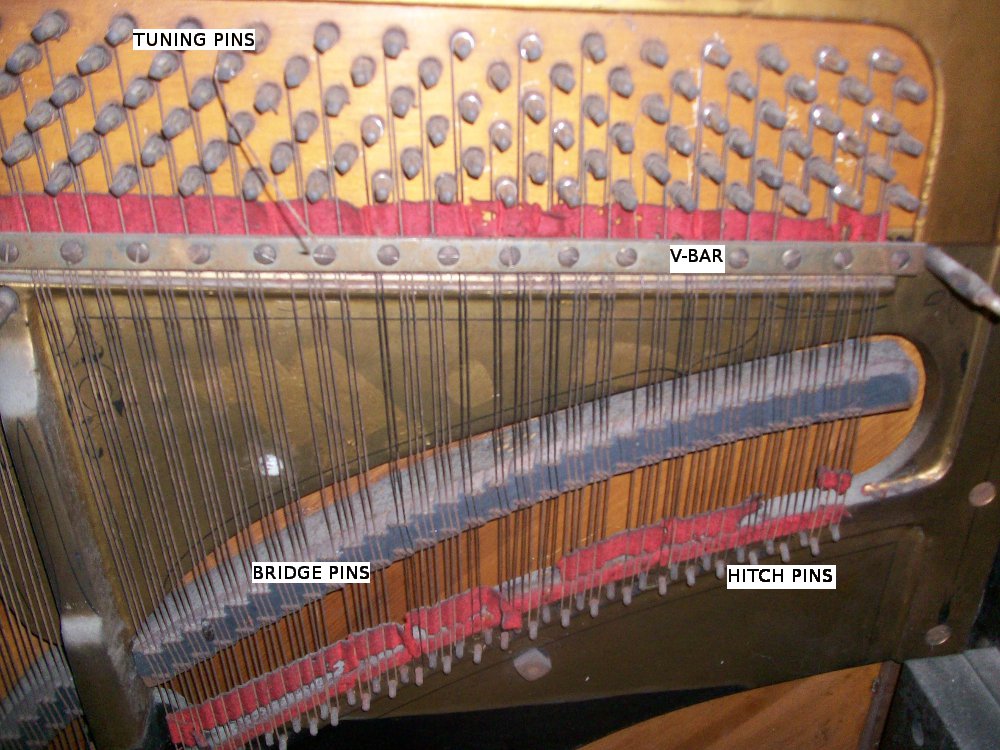
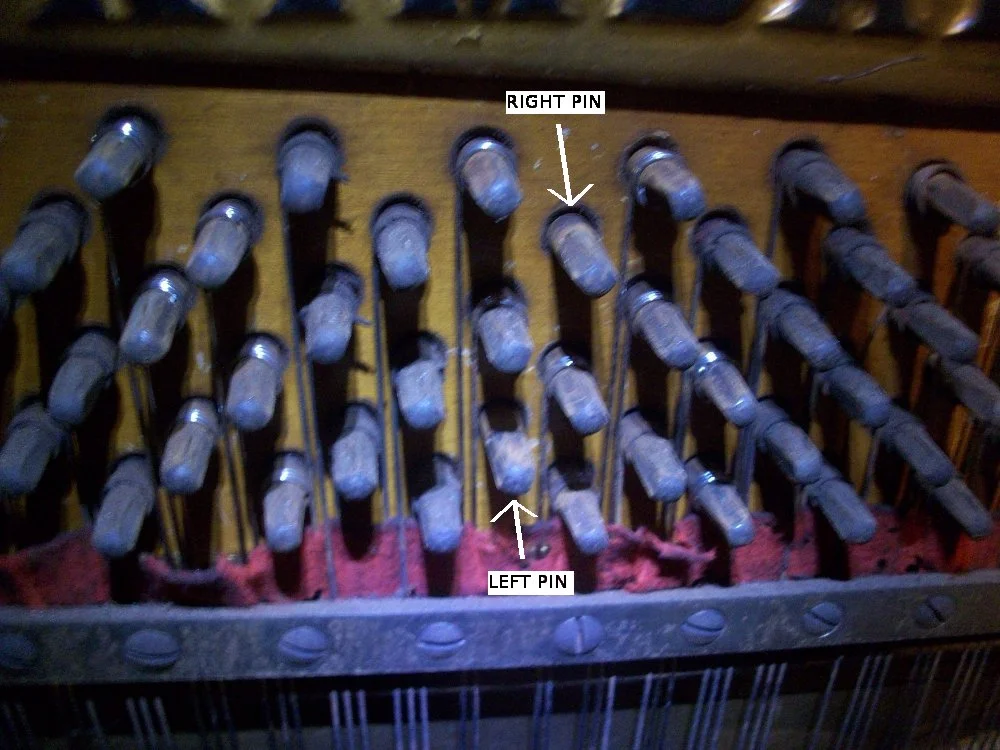

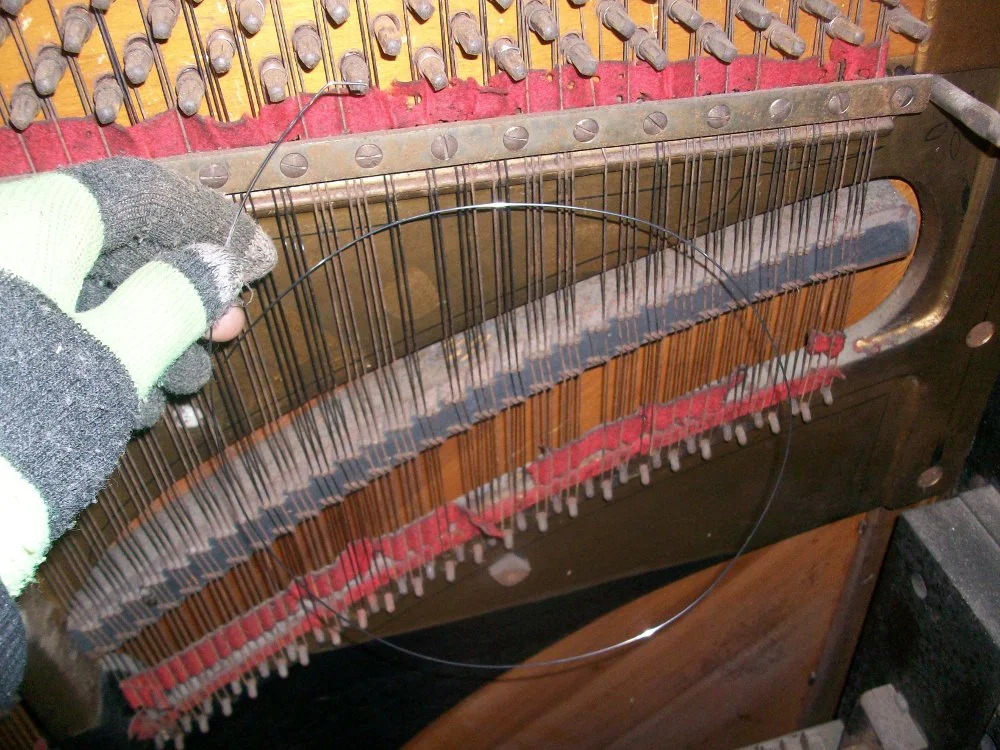


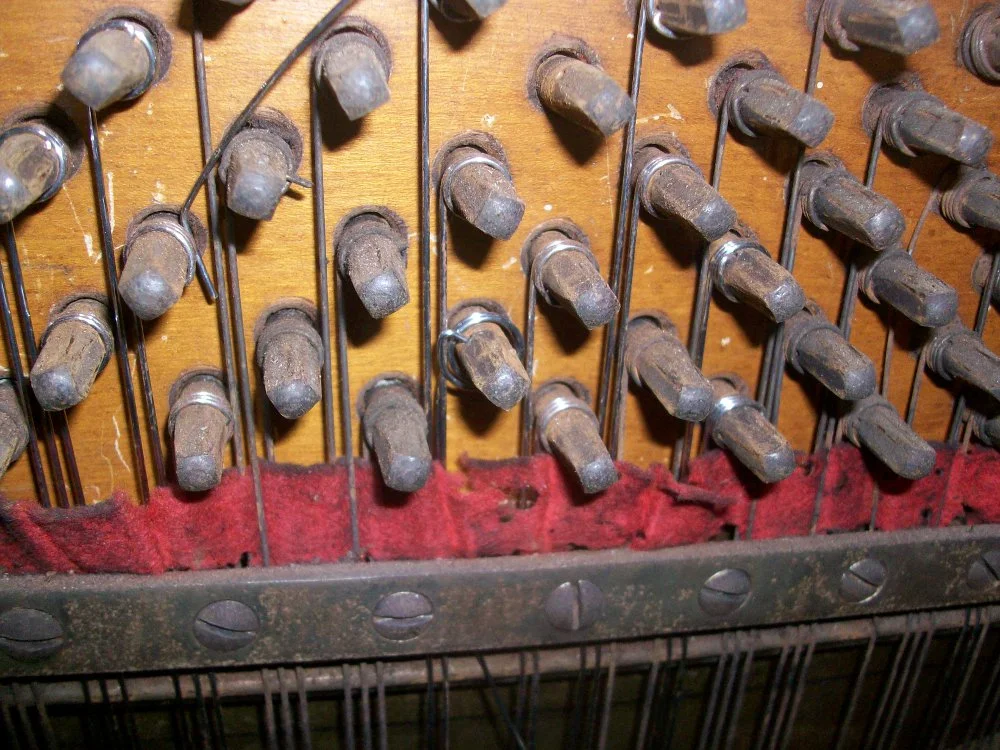
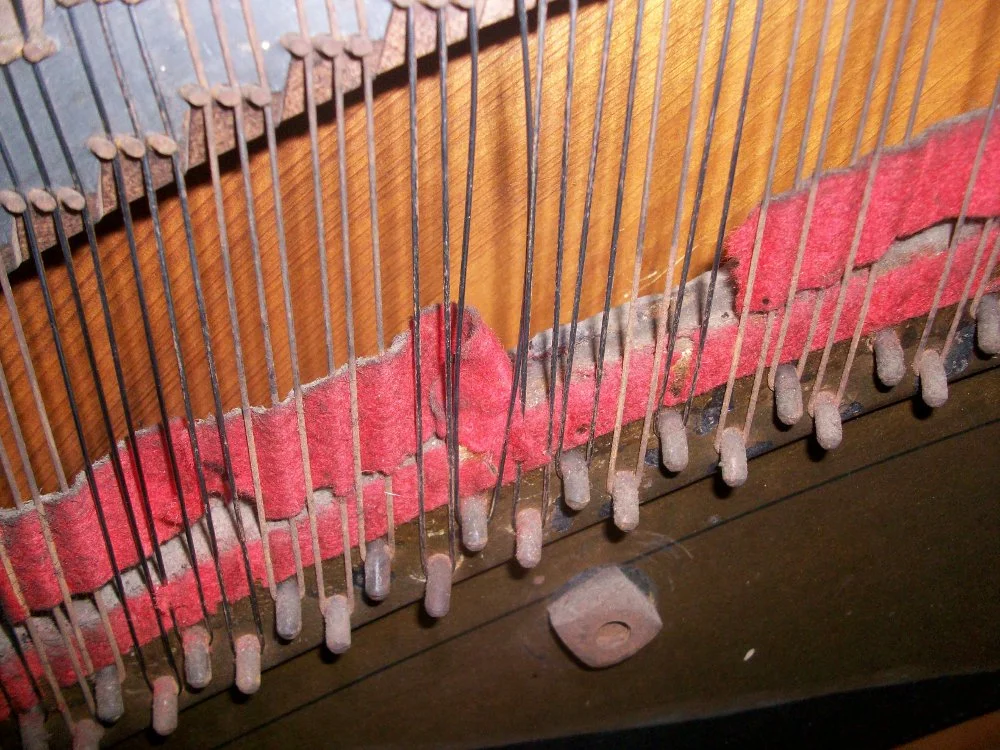



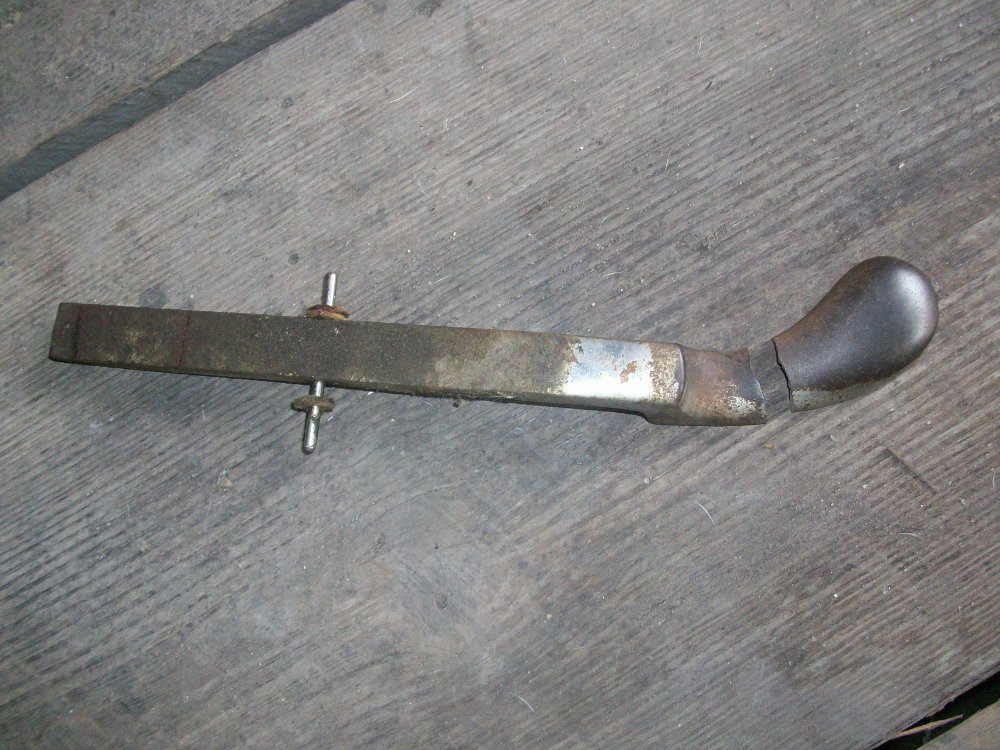



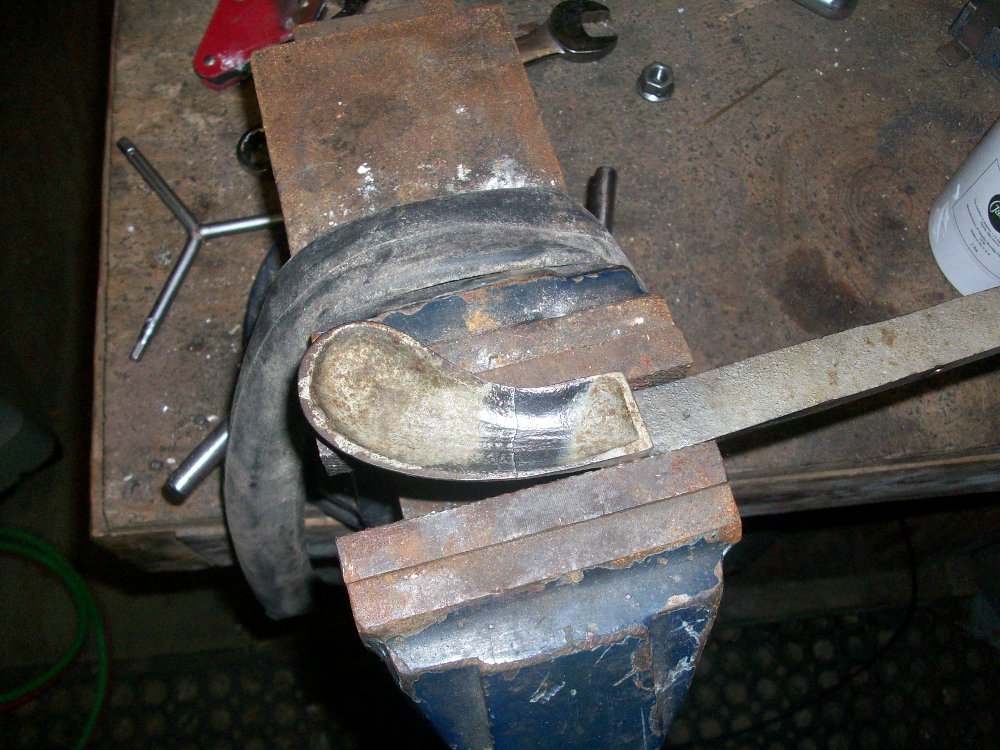


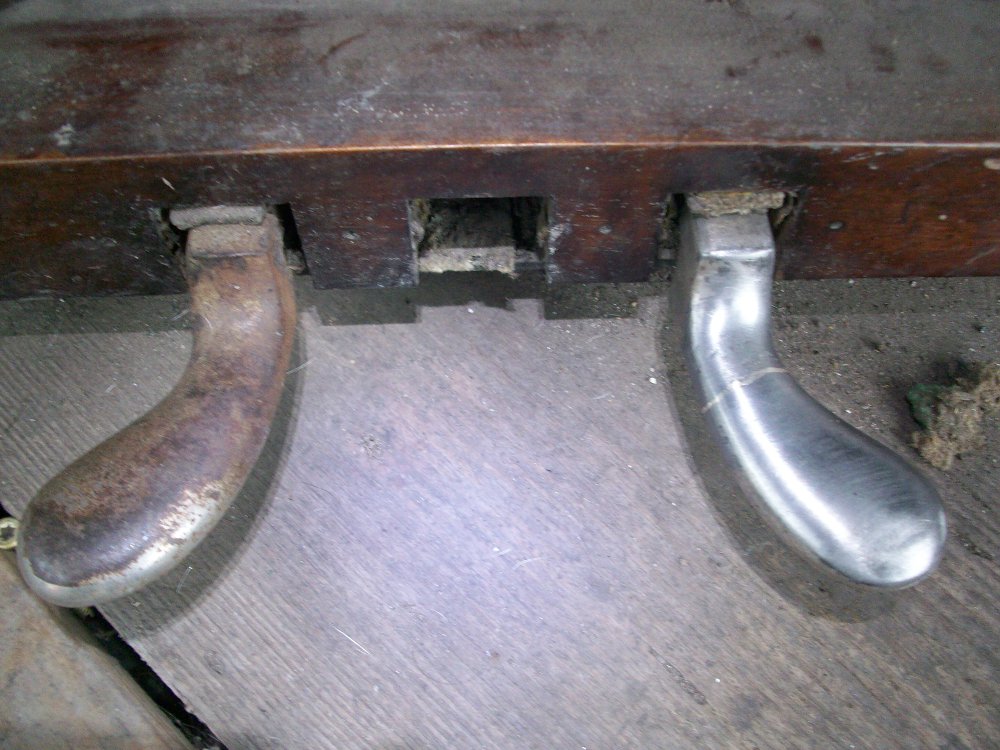

I have been servicing and tuning pianos in NOLA since 2012 after first becoming interested in piano technology in 2009. With a background in teaching bicycle mechanics, I bring a methodical mindset and a love of sharing knowledge and skills to the rich musical culture of New Orleans.